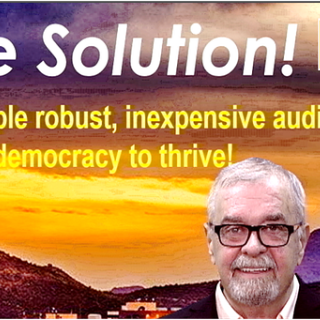Advertisement
Black Lives Matter activists are under surveillance and attack here in Columbus.
A Columbus Police report obtained by the Columbus Free Press indicates that the police would have been justified in shooting Torri Sablan, a prominent local civil rights activist, as she rode along with friend Ashley Henderson when they transported Alexander Paraskos to the hospital on August 1st this year.
The police report included the chilling abbreviation Just. Hom. Circ. This means “justifiable homicide circumstance” – indicating the police would have been justified in killing Sablan.
Police records describe LEOKA circumstances, indicating a “Law Enforcement Officer Killed or Assaulted.”
How a going-away party thrown by activists and an innocent asthma attack turned into a potential police homicide situation is hotly disputed. Sablan and Henderson are black females and Paraskos is a transgender male -- all well-known political activists.
As Henderson, a designated driver at the party, drove Paraskos to the hospital during his asthma attack he slipped in and out of consciousness, Sablan rode along. A stop at the Taco Bell at 10th and High Street to ask the security guard for directions to the OSU Medical Center triggered the bizarre police incident. Realizing that the hospital was just down the street, the activists tried to drive out of the parking lot, the security guard who claimed to be a police officer, preventing them. He instructed them to wait for an emergency medical vehicle.
The police report states that police were dispatched to the activist’s car under a Code 60, which means that there is a suspicious vehicle and emergency lights and sirens were needed from squads in the vicinity. Strangely, a police call 53 is in the report, which indicates that a man is down, and police notes state that it was a “firefighter needs assistance call.”
The three in the car all claim that police and paramedics arrived roughly at the same time and police blocked the paramedics from approaching the car while they detained and questioned first Henderson and Sablan.
So while a dozen surrounded their vehicle, Paraskos struggled to breathe and had not received any medical attention.
Henderson, in a WCRS-FM radio interview, claimed that the police interrogated her and demanded that she admit to being in possession of first, cocaine, and later, marijuana. Next, the officers asked for identification from Sablan and a semi-conscious Paraskos. Both Henderson and Sablan state that once the police took their IDs, and ran them, they began pulling the activists out of the car and assaulting them.
Scrapes and bruises on Paraskos’ feet appear to support the story that police dragged him face down out of the vehicle, still without any medical assistance. Sablan stated that she was pulled out of the car by her hair, thrown to the ground and cuffed. Henderson said that out of nowhere, an officer asked her “Did you just attack those cops?” Eventually all three were cuffed and arrested.
Henderson was charged with six counts including misconduct at an emergency, hampering operations; resisting arrest; disorderly conduct; possession of drugs, marijuana; illegal use or possession of drug paraphernalia; and for an open liquor container. Police notes refer to a “Tanqueray gin bottle (empty).” The 21-year-old Sablan, who police claim in the report that they could have justifiably murdered, was charged with three charges obstructing official police arrest; resisting arrest; and possession of drugs, marijuana.” The police report alleged they found a bag of marijuana, rolling papers, and a glass pipe. Both Henderson and Sablan claims they had no drugs, alcohol or paraphernalia and these must have been planted on them or in the car. The nearly comatose Paraskos managed to catch two charges, of obstructing official business and resisting arrest – despite being in the throes of a severe asthma attack.
Is there a possible explanation for the discrepancy between stories told by the police and the Black Lives Matter activists?
Journalist Jason Leopold of Vice News recently reported that, “The Department of Homeland Security (DHS) has monitored the Twitter account of prominent civil rights activist DeRay Mckesson,” referring to him as a “professional protester” who is “known to law enforcement.” Vice News obtained the information under a Freedom of Information Act (FOIA) request. Documents secured by Vice News appear under the email subject line FYSA which, according to Leopold, stands for “For Your Situational Awareness.”
Just as with the Black Panthers in the 1960s, more recently the Occupy movement, and now Black Lives Matter, the government is continuing counter-intelligence spying practices on the activist community. This new COINTELPRO program has been well-documented by The Intercept through another FOIA request. The documents obtained by The Intercept show that since Ferguson erupted on August 9, 2014, civil rights activists demanding justice for Michael Brown and other black victims of police violence have been under constant DHS and Federal Emergency Management Agency (FEMA) surveillance.
The Intercept acquired two August 11, 2014 DHS and FEMA reports monitoring social media sites Twitter and Vine. Within a few days, DHS expanded nationwide to gather intelligence on the National Moment of Silence Day, according Intercept journalist George Joseph. An April 2015 FEMA memo documents that the DHS was spying on anti-police brutality activists in both Philadelphia and New York.
Baher Azmy, Legal Director for the Center for Constitutional Rights, told The Intercept that the spying on the Black Lives Matter movement is designed to have a chilling effect on constitutionally-protected activity. “What they call situational awareness is Orwellian speak for watching and intimidating,” Azmy said.
Professor Brandan McQuade postulated to the Intercept that the DHS-FEMA fusion centers that were set up to monitor “counterterrorism” are now being used to spy on the Black Lives Matter movement because terrorism is a remote threat.
Hopefully the attorneys for Columbus’ Black Lives Matter activists will demand DHS and FEMA documents that will settle the issue on whether Columbus Police are coordinating with federal anti-terrorist agencies to suppress constitutional legal activism. When lawful activists are treated like terrorists, it appears that local police see Black Lives Matters activists as justified targets for homicide.
Contribute to their legal defense here




